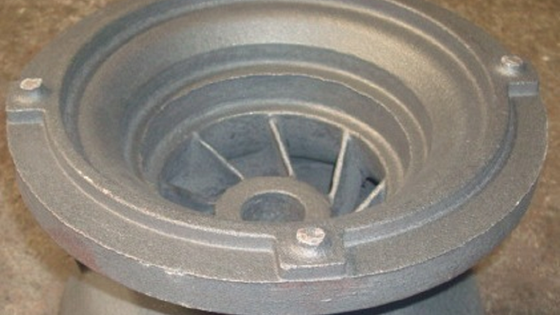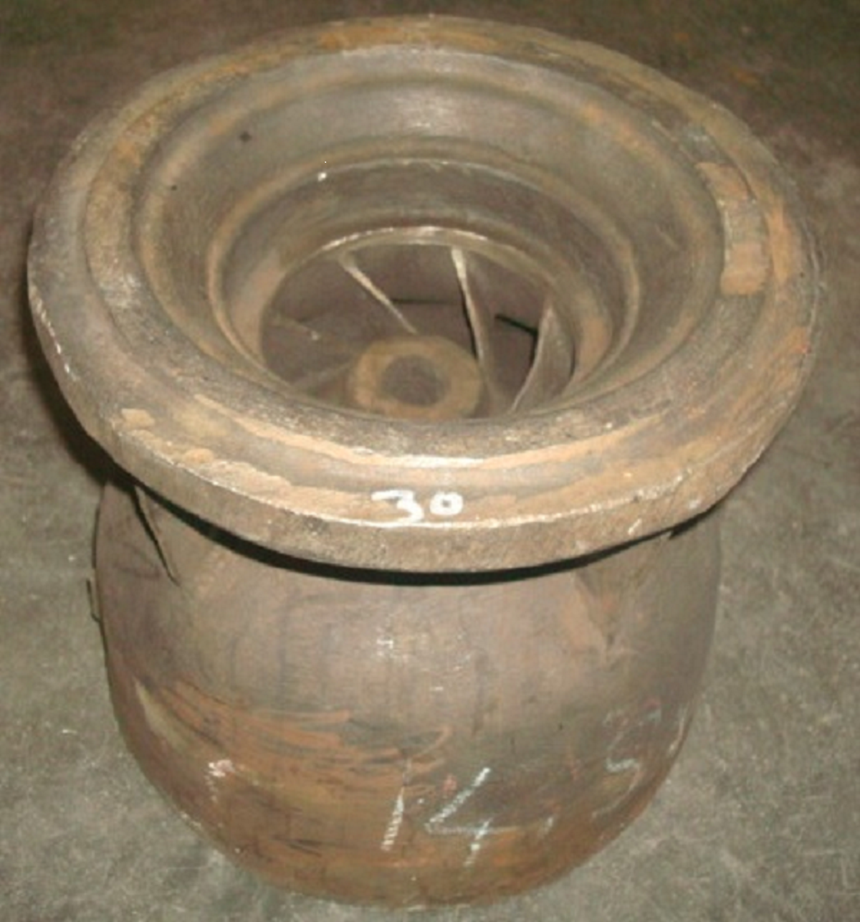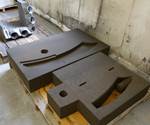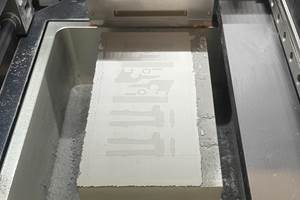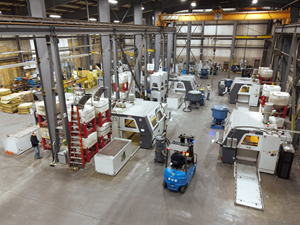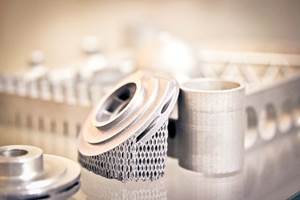Comparing Conventional and 3D Printing Processes for Sand Casting
New research shows surprising benefits for 3D-printed molds and cores over traditional casting processes.
Patternmaking for metal casting is not only a skilled trade, but in many cases represents a true art form. Quality patterns, particularly wooden patterns for large castings, involve construction methods of exacting standards and skills across multiple tool sets. But patterns are also time-consuming, costly, often wasteful and require increasing amounts of storage space. And as 3D printing for sand casting molds becomes more widespread, they are becoming increasingly obsolete.
A new study by researchers from Indiana University - Purdue University Indianapolis (IUPUI), shows why. Commissioned in 2015 by the India-based research and consulting firm Development Solutions Inc., IUPUI researchers Nishant Hawaldar and Jing Zhang systematically compared the conventional sand-casting process with the 3D-printing process for sand molds. The researchers’ test object was a simple pump bowl. (See Figures 1 and 2 above.)
The conventional casting process for the study began with crafting patterns to create the cope and drag using a no-bake sand. That sand was blended with binders in a mixer and manually prepared to form the mold. Once the runners and risers were prepared, the mold was complete. Zhang says that creating the mold and core took roughly six hours, while the pattern and core box took the researchers and their foundry team partners nearly six weeks to make.
Once the mold and core were assembled, the bowl was cast with FG-260 cast iron. After cooling, the casting was knocked out and sent to a fettling shop before being inspected for defects. The bowl’s final weight was 32 kg.
For the 3D-printed sand mold, the metal casting process began with the creation of the CAD model, which was uploaded to a Voxeljet VX1000 printer. The print head for the VX1000 is mounted over a horizontal arbor and moves along X, Y and Z axes, whereas the Viridis3D RAM123 utilizes a robotic arm fitted with the print head to spray binders. The 3D-printed molds in this study were created with Voxeljet’s proprietary Furan Direct Binding (FDB) silica sand with an average grain size of 140 microns. (Incidentally, the printing process for Zhang and Hawaldar’s study differs from the 3D sand-printing process we wrote about in November of last year.)
By the time the mold had been printed, the most obvious net benefit of 3D printing for metal casting is already apparent. According to Zhang, printing all of the mold’s components took 26 hours, compared to the six-plus weeks that it took the traditional casting process to arrive at this step. But Zhang says that benefit is far from the only one that he and Hawaldar found.
As is apparent in Figures 1 and 2 above, because of the fine-grained sand used for printing the mold, the average surface roughness for the pump bowl cast using the 3D printing process is ~200 microns—much smoother than the ~500-micron average roughness of the conventionally cast pump bowl. Additionally—and perhaps most surprisingly—the weight of the pump bowl made using the 3D-printed mold and core was 23.4 kg, nearly 27 percent (8.6 kg) lighter than the traditionally cast bowl.
Zhang attributes most of the weight difference to a procedural difference: pattern design allowance. “The conventional sand casting process starts with making the pattern for the final cast, which further will be used for making cope and drag,” he says. “A taper, or draft angle, is required on the pattern to reduce the damage to the edges while removing the pattern. This draft increases the pattern’s surface area and volume, which contributes to extra metal needed to fill the cavity. But for sand casting using the 3D-printed molds and core, the pattern was eliminated, as were the allowances related to pattern. This resulted in reduction in the final weight of the cast.”
After Hawaldar and Zhang presented their comparison study at the PowderMet2017 conference in Las Vegas last year, the U.S. Army Research Laboratory expressed interest in adopting their 3D printing technique for fabricating casting parts in forward operating bases. It’s work that the two researchers—who recently published a book titled “Additive Manufacturing: Materials, Processes, Quantifications and Applications" (Elsevier, 2018)—plan to carry forward.
“In the foundry industry, new product development processes take time,” Zhang says. “Adopting 3D printing processes will help minimize the product design and development delay, and greatly ease the process for new product development. But just as important, critical-shape castings can be achieved with 3D printing—a very important option for foundries. On top of that, as pattern-making gets eliminated from the casting process due to direct digital printing, it will definitely reduce storage inventory of patterns.”
Related Content
AM 101: What Is Binder Jetting? (Includes Video)
Binder jetting requires no support structures, is accurate and repeatable, and is said to eliminate dimensional distortion problems common in some high-heat 3D technologies. Here is a look at how binder jetting works and its benefits for additive manufacturing.
Read MoreLooking to Secure the Supply Chain for Castings? Don't Overlook 3D Printed Sand Cores and Molds
Concerns about casting lead times and costs have many OEMs looking to 3D print parts directly in metal. But don’t overlook the advantages of 3D printed sand cores and molds applied for conventional metal casting, says Humtown leader.
Read MoreStratasys and Desktop Metal to Combine in Approximately $1.8 Billion All-Stock Transaction
Merger looks to deliver industrial polymer, metal, sand and ceramic solutions from design to mass production.
Read MoreAmerica Makes Announces IMPACT 2.0 Project Call Worth $6.6 Million in Funding
The deadline for the first set of project proposals is May 29.
Read MoreRead Next
Foundry Says Robotic Sand Printing a “Game Changer” for Metal Casting
The Hazleton Casting Company augments its traditional foundry operations with additive manufacturing. A new sand 3D printing system is expanding options for the foundry’s customers in areas including legacy tooling, product development and design complexity.
Read MoreSand Printing’s Side Benefit
A pattern maker is now able to skip the pattern by printing foundry mold components directly in sand. This figurine is a byproduct of the way the company batches the sand-printing jobs for greater efficiency
Read MoreCrushable Lattices: The Lightweight Structures That Will Protect an Interplanetary Payload
NASA uses laser powder bed fusion plus chemical etching to create the lattice forms engineered to keep Mars rocks safe during a crash landing on Earth.
Read More

